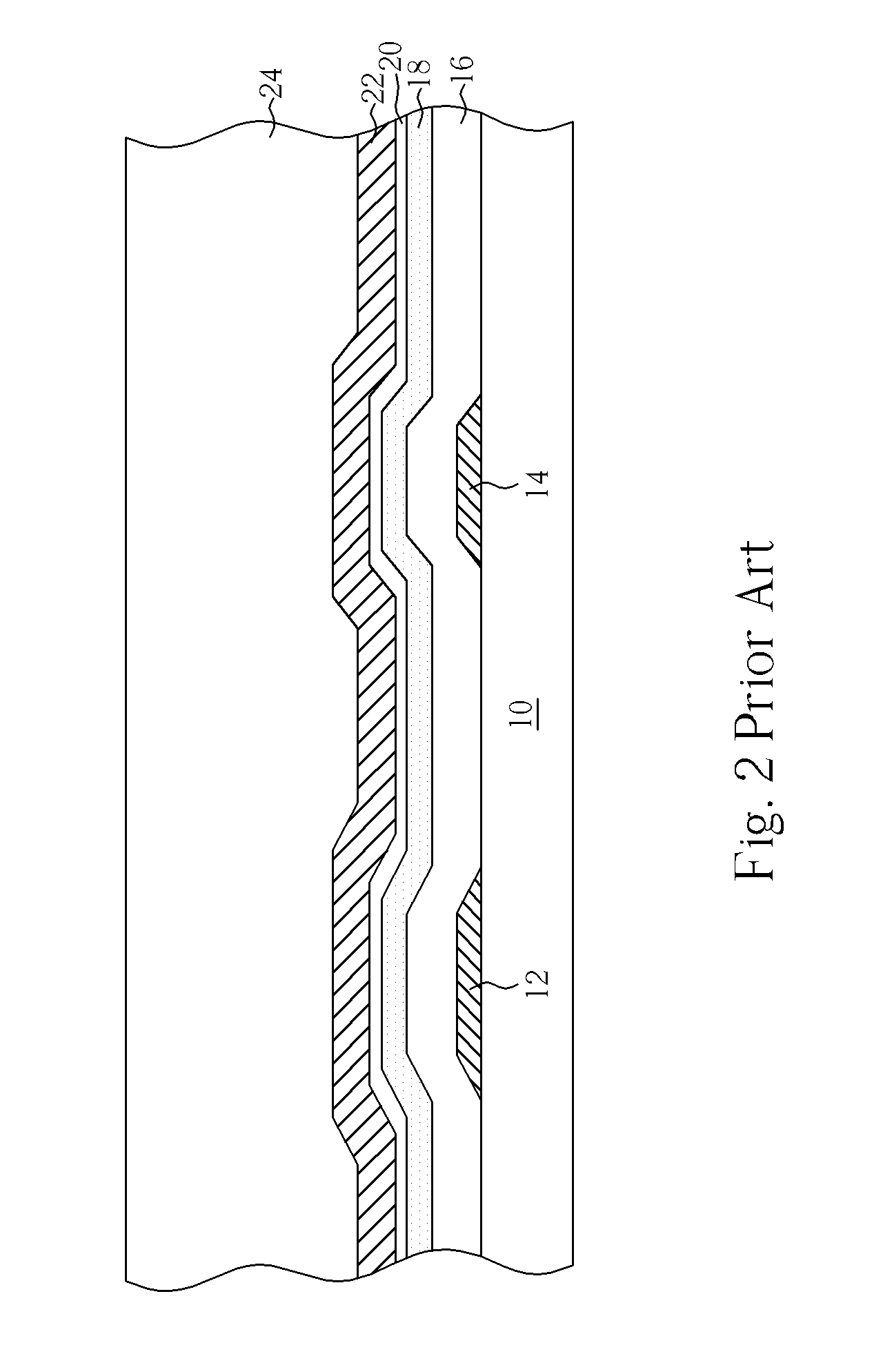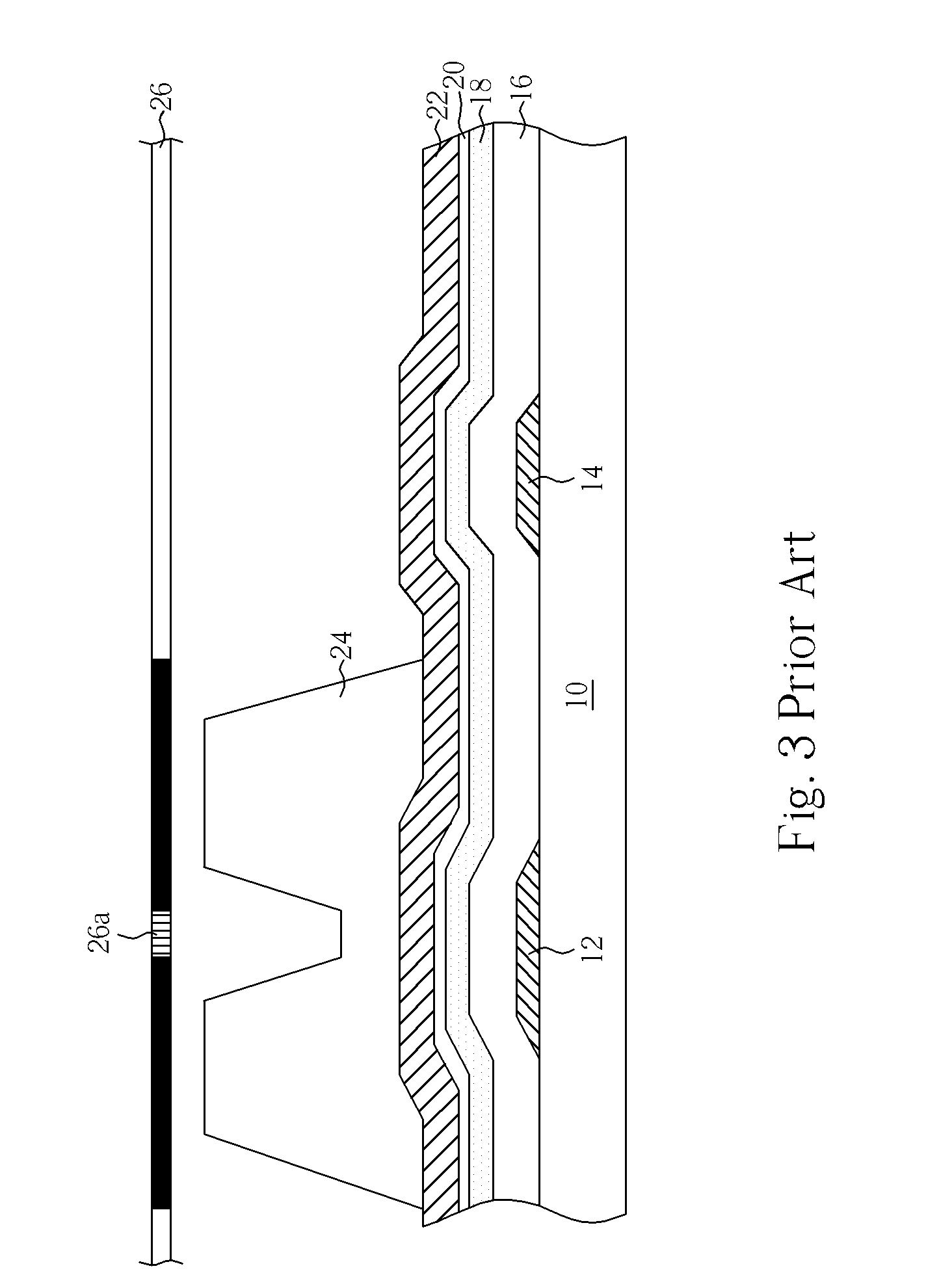Thin-film transistor and fabrication method thereof
a technology of thin-film transistors and fabrication methods, which is applied in the direction of basic electric elements, electrical equipment, semiconductor devices, etc., can solve the problems of affecting the electric property of thin-film transistors, affecting and whose formation cost is very high, so as to reduce the number of photomasks used during the fabrication method, avoid the occurrence of photo current, and improve the quality of thin-film transistors
- Summary
- Abstract
- Description
- Claims
- Application Information
AI Technical Summary
Benefits of technology
Problems solved by technology
Method used
Image
Examples
first embodiment
[0018]FIGS. 5-11 are schematic diagrams of the fabrication process of a thin-film transistor according to the present invention. Referring to FIG. 5, first, a transparent substrate 50 is provided, wherein the substrate 50 may be a glass substrate, a quartz substrate, or a plastic substrate. Then, four thin films 62 are successively formed on the surface of the substrate 50, and the four thin films 62 comprises a first conductive layer 52, an insulating layer 54, a semiconductor layer 56, and a second conductive layer 60 from bottom to top. However, during forming the four thin films 62, an ohmic contact layer 58, such as an N+ doped layer, may be formed between the second conductive layer 60 and the semiconductor layer 56 in order to reduce the resistance between these two layers. In other words, the first conductive layer 52, the insulating layer 54, the semiconductor layer 56, the ohmic contact layer 58, and the second conductive layer 60 are successively formed on the surface of ...
second embodiment
[0023]Referring to FIGS. 12-13, FIGS. 12-13 are schematic diagrams of the fabrication process of a thin-film transistor according to the present invention. FIG. 12 is a continuation of the fabrication process of FIG. 6. After the first PEP, a semiconductor island 70, a gate electrode 68, and a wire structure 72 are formed on the surface of the substrate 50, wherein the areas of the gate electrode 68 and the insulating layer 54 are both larger than the area of the semiconductor island 70 so that stair structures 74 are formed at two sides of the four thin films 62 to contribute to form the passivation layer on the semiconductor island 70, which may uniformly step cover the surfaces of the whole semiconductor island 70 and the gate electrode 68. The photoresist layer 64 is removed after the first PEP.
[0024]Thereafter, as shown in FIG. 13, a laser ablation process is carried out to the semiconductor island 70 to directly remove a portion of the second conductive layer 60 so as to defin...
PUM
| Property | Measurement | Unit |
|---|---|---|
| width | aaaaa | aaaaa |
| conductive | aaaaa | aaaaa |
| areas | aaaaa | aaaaa |
Abstract
Description
Claims
Application Information
 Login to View More
Login to View More - R&D
- Intellectual Property
- Life Sciences
- Materials
- Tech Scout
- Unparalleled Data Quality
- Higher Quality Content
- 60% Fewer Hallucinations
Browse by: Latest US Patents, China's latest patents, Technical Efficacy Thesaurus, Application Domain, Technology Topic, Popular Technical Reports.
© 2025 PatSnap. All rights reserved.Legal|Privacy policy|Modern Slavery Act Transparency Statement|Sitemap|About US| Contact US: help@patsnap.com



